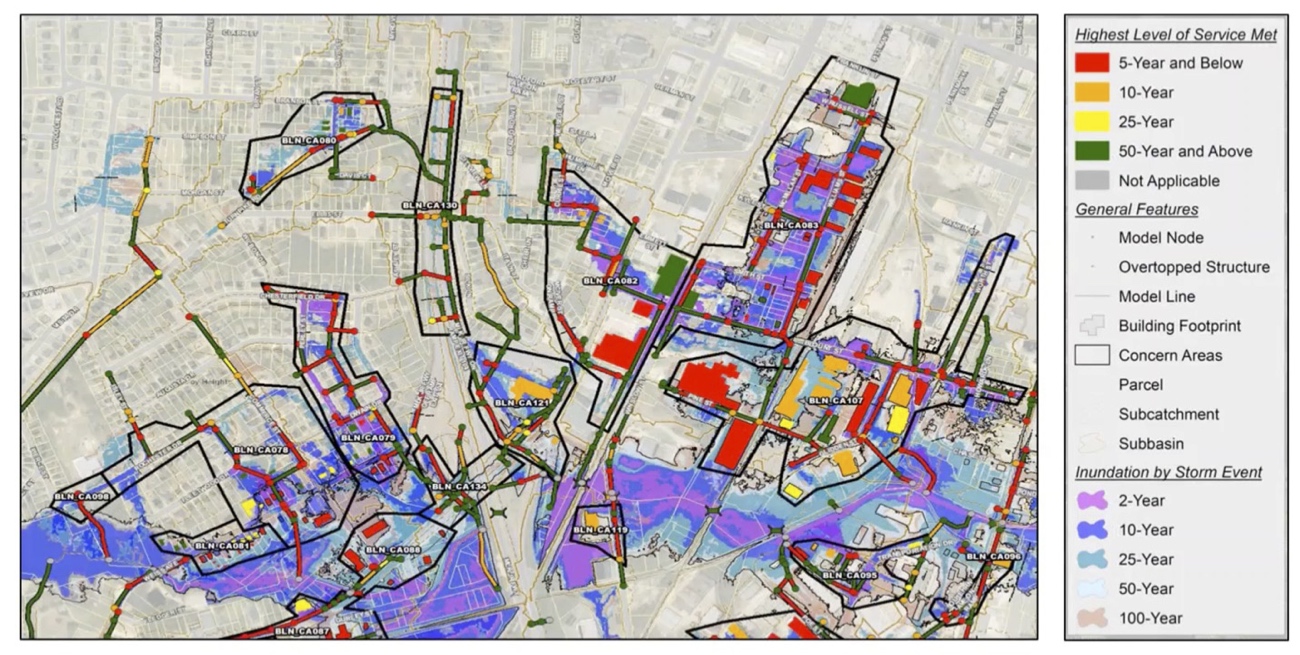1D and 2D modeling with InfoWorks ICM and HEC-RAS: Differences, similarities, and an integrated workflowBy the year 2100, the EPA estimates that...
Published on by Water Network Research, Official research team of The Water Network

By the year 2100, the EPA estimates that global precipitation could rise as much as 30%, with the frequency and intensity of storms rising significantly as well. Combatting flooding events and storm surges is top of mind for most in the stormwater industry. With these growing challenges comes the growing need for digital tools and modeling programs that can effectively forecast, predict, and model these weather events to help us plan, design, and build water infrastructure. While we at Autodesk have built a growing suite of hydraulic and hydrologic modeling software tools, we also recognize the great work that the U.S. Hydraulic Engineering Center has done developing tools like HEC-RAS and HEC-HMS.
In this post, we’re going to walk through some of the benefits and differences between InfoWorks ICM and HEC software, and also present a combined modeling workflow that Arcadis leveraged in stormwater modeling for the City of Fayetteville.
Understanding HEC-RAS and InfoWorks ICM
InfoWorks ICM and HEC-RAS are two of the most common 2D hydraulic modeling solutions available on the market. While HEC-RAS is a free tool developed by the U.S. government, InfoWorks ICM is Autodesk’s privately developed integrated catchment modeling solution developed through years of expertise in the industry. Both tools are great, and it’s important to note, in talking with many InfoWorks ICM users, it’s clear that a number also run parallel models in HEC-RAS and HEC-HMS. So, how do you know which one to choose, what the differences are, and when to use both? Let’s dig in.
To start, if you’re simply wondering which solution to use for 2D hydraulic modeling, the short answer is that InfoWorks ICM has superior modeling capabilities, impressive collaboration workflows with the Workgroup Database, and with access to cloud simulations and free training and support. When it comes to selecting your stormwater modeling system of choice, our recent industry survey of webinar attendees found that 31% of respondents base their decision based on support and training availability, 27% on regulatory requirements, and 13% on advanced feature availability. This focus on support is why the Autodesk team of water experts have spent years developing free training courses and learning materials to get up to speed as fast as possible with InfoWorks ICM.
To understand what sets the two software solutions apart, let’s first explore common features between them both.
Common features between InfoWorks ICM and HEC-RAS
To understand what sets the two software solutions apart, let’s first explore common features between them both:
InfoWorks ICM and HEC-RAS allow for two-dimensional modeling of flows by use of the shallow water equation.
InfoWorks ICM and HEC-RAS each go through comprehensive testing and validation for results accuracy and simulation accuracy. Each tool has not only been tested by Autodesk and HEC (Hydrologic Engineering Center in Davis, California), respectively, but has been extensively used throughout industry and by government entities for stormwater and flood modeling.
InfoWorks ICM and HEC-RAS allow for 1D and 2D modeling in an integrated solution.
These are the core similarities between the two tools, but how then, do they differ?
Making a mesh of the two hydraulic modeling tools
One of the core differences between the hydraulic modeling solutions is how they go about meshing a surface for calculation. InfoWorks ICM’s simulation model is based on a triangular mesh, which is leveraged to model a given surface to a high degree of accuracy. When this simulation style is coupled with InfoWorks ICM’s access to cloud computing, engine stability, and speed, the solution allows for highly accurate and true-to-reality hydrologic modeling. Additionally, with this cloud architecture, simulation times are significantly improved.
InfoWorks ICM does a great job of integrating structures, like bridges, roads, and culverts, into the 2D mesh and as a result, presenting the results accurately. Additionally, ICM’s ability to develop combined 1D and 2D models creates a highly efficient workstream for modelers working on large or complex networks. HEC-RAS is slightly limited in regard to integrating bridges and structures into its 2D mesh, making InfoWorks ICM the more suitable solution for more urban network modeling.
On the other hand, HEC-RAS’s mesh is irregular, meaning that the default shape is a square, with each mesh grid able to have up to eight faces. With InfoWorks ICM, to achieve higher accuracy in model results, particularly in areas with significant changes in topography, the mesh is shrunk to output more accurate results, but in turn, this creates more calculations (more mesh zones, more equations to calculate). HEC-RAS’s irregular mesh approach provides an interesting alternative to shrinking mesh size while trying to account for more fine topographical details. In essence, certain highly variable topographical zones could be handled through this irregular mesh without shrinking each cell size, whereas triangular mesh requires more cells.
Attached link
https://www.autodesk.com/blogs/water/2024/08/20/2d-modeling-with-infoworks-icm-and-hec-ras-differences-similarities-and-an-integrated-workflowTaxonomy
- Modelling
- Hydrological Modelling
- Hydrological Modelling
- Hydraulic Modelling